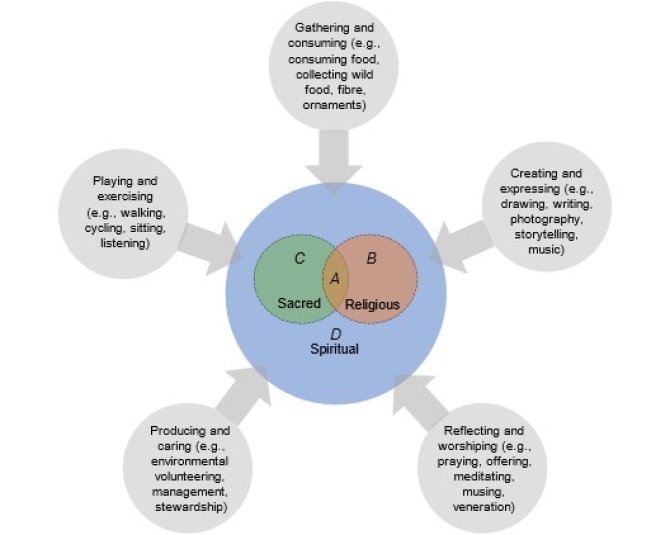Blog post
Re-spiritualizing forests...What in the heavens does this mean?!
"In the forests are things you could lie in the moss for years pondering about it." (Franz Kafka)

With the quotation from a famous poet from Prague, we started our workshop in 2019 in the same city as part of the SINCERE project. Experts and enthusiasts of spiritual and cultural values of forests from Europe and Asia came together to discuss the present and past relevance of “spiritual values of forests”.
The result is an exploratory study , based on knowledge from 18 inter-disciplinary experts including natural and social scientists.
Funeral forests, forest therapy, forest bathing, these are all “new” trends, especially in Europe. What is the spiritual fuss over forests about? That’s what we wanted to find out!
The spiritual interest in forests is not new. Humans have had a close relationship with forests and have been intrigued by its magical nature since forever. Societies depended on forests also for their spiritual development. Forests and trees are often central in myths and folklore – thinking about the Brothers Grimm fairytales. And again, even in art and films today such as Lord of the Ring’s Treebeard character and Avatar.
We soon realized, to avoid a Babylonian confusion, we needed to find a common understanding of “spiritual values of forests” or in short, “forest spirituality”.
Spiritual values are subjective and intangible, thus difficult to measure. Spirituality is not necessarily limited to religion. Also, there is not a clear division between forest spirituality and other forest ecosystem services, such as recreational activities (hunting, collecting berries, etc).
Attempting to define forest spirituality and reduce its abstractness, we came up with a diagram.

(A) Sacred in a religious sense (e.g., sacred tree dedicated to a deity). (B) Spiritual value in a religious sense, not sacred per se (e.g., managing nature in accordance with religious convictions). (C) Sacred, but non-religious (e.g., funeral forest or hallowed ground). (D) Non-religious, non-sacred spiritual experience in/with/through forests (e.g., forest healing). The activities which trigger spiritual values are illustrated with arrows.
We argue that “Changing perceptions of nature are interconnected with changing attitudes towards forest management and policies, which again transform the landscape and consequently the perceptions of it.” This evolving perspective leads to our Forest Spirituality hypothesis. We divided the continuous transition of forest spirituality into 4 stages.
During the “nature is powerful” stage, forest spirituality is omnipresent through the abundance of sacred natural sites and practices of people, who dependent on forests for their livelihoods. Nature is the highest power. “Nature gives, and nature takes” – respect it and be thankful for its gifts.
In the “taming of nature” stage, connected to transformation of forest landscapes and intensifying land-use practices, religions guide human–nature interrelations. Nature is “tamed” to serve human and god(s). Nature worshiping is banned, or transformed, with temples or churches often replacing sacred natural sites. Management of forests through organized religious was not always harmful for forests. Some monasteries applied sustainable forest management based on the idea that god(s) made nature for humans, but that humans should not waste or misuse nature.
In a third stage (“rational management of nature”), the relationship between humans and forests is continuously demystified as forests are seen as resources to satisfy the needs of society. Forest spirituality is at its lowest point as forests are transformed to economic commodities.
During a fourth stage (“reconnecting with nature”), a revival of forest spirituality (re-spiritualization) is driven by urbanization and individualizing spirituality. People visit the forest to find inner peace and recharge their batteries. We see a connection with religions and environmentalism. Religious figures encourage nature conservation, acknowledging humans’ responsibility towards nature.
The fourth stage often goes hand-in-hand with the rising environmental movements, where people become more aware of the risks nature faces. With climate change and its effects, people have seen that we can’t tame nature, she is in control. But we should tame and control our own behaviour towards nature.
So, why should we care? We believe “A better understanding of societies’ ancient and present relationships with forests, the use and perceptions of forests, and the related spiritual significance could assist decision and policymaking and address trade-offs in the different application of forests ecosystem services.”
Read more about spiritual values of forests, our forest spirituality theory and how we think it compares to the nature-culture dichotomy or the Forest Transition Theory in the full article.